Many of us talk about Ajanta Ellora in the same breath. Most of us know vaguely that Ajanta Ellora is somewhere in Maharashtra and comprises of ancient stone carvings, sculptures and cave paintings. Some among us know that Ajanta Ellora are UNESCO World Heritage sites. Here is an attempt to clarify and elaborate on these wonderful places. Yes, Ajanta and Ellora are two distinct places, over 100 kilometers apart. Let me recount the common features and the differences before a detailed description of our visit.
First, the common features between Ajanta and Ellora — Both are UNESCO World Heritage sites and comprise of a series of caves wherein carvings and sculptures have been painstakingly and artistically created out of monolithic rock. Both Ajanta and Ellora are usually visited by tourists with Aurangabad as base, though Ajanta is closer to the town of Jalgaon.
Now for the differences:
1) Ajanta and Ellora are on different routes from Aurangabad (or to give its new name Chhatrapati Sambhaji Nagar). Ajanta is at a distance of around 110 kilometers on the Aurangabad-Jalgaon Road, with a detour of around 7 kilometers after Ajintha village. Ellora is only 31 kilometers from Aurangabad at a place called Khultabad, that is close to the Grishneshwar jyotirlinga, as well. En route, you come across another tourist attraction, the Daulatabad Fort.
2) Ajantha has 29 caves open to the public, whereas Ellora has 34. Ajanta is located on a narrow horseshoe-shaped hillside (one has to climb up) overlooking the Waghora river valley. The caves are one after the other and extend to a compact distance of around 1-2 kilometers. Most of the caves at Ellora are at ground level, with only a few of them in elevated spots. However, the stretch of caves at Ellora is around 4 kilometers.
3) Ajanta caves consist of sculptures, scriptures, prayer halls & living quarters, all relating to Buddhism only. In addition, there are wonderful color paintings on the walls and ceilings depicting various stories from the life of The Buddha. Ellora, on the other hand depicts Hinduism, Jainism & Buddhism in its temples, sculptures and carvings. However, color paintings as seen in Ajanta are absent here.
4) The carvings, sculptures and paintings at Ajanta date back to two distinct periods – 2nd century BC to 1st century AD and then again from 5th century AD to 6th century AD. Ellora came in later it appears, again in phases between the 6th century AD and 10th century AD.
5) The funding for the Ajanta Caves architecture came mainly from the Vakataka & Satavahana dynasties. In case of Ellora, the dynasties involved in the creation were the Chalukyas, Kalachuri & the Rashtrakutas.
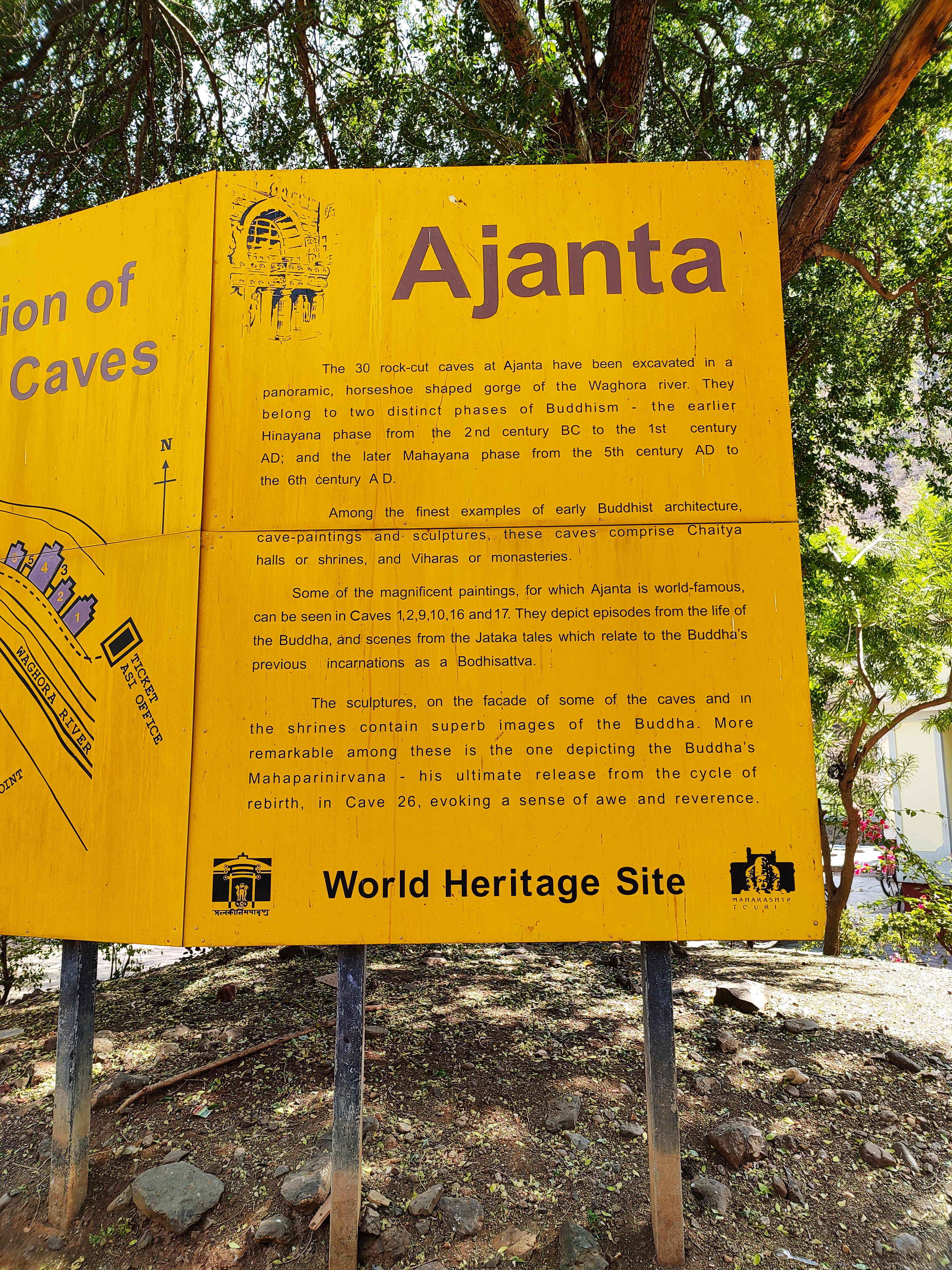

It was around 8.30 in the morning when our aircraft touched down in Aurangabad. A fairly, big, modern airport. There was a slight nip in the air as we got into the tourist cab waiting for us. Away we went on the Aurangabad-Jalgaon Highway, stopping en route for breakfast, a good 40 kilometers later. It was an open-air restaurant set up on small patch of land covered by a thick canopy of neem trees. Spicy poha & medu vada with chutney, washed down with coffee, and we were on the road again. Very good road that at a few places passes below the Samruddhi Mahamarg, the 6-lane expressway between Nagpur and Mumbai, that is partially opened. The one big town on the way is Sillod, which one has to pass through and slows us down a bit. after around 2 hours fifteen minutes, we crossed the village of Ajintha. One can see hills all around and we were told our destination was some 7 kilometers away. There was an intersection, that our driver pointed out, led to the ‘View Point’. It is the elevated place from where Captain John Smith discovered the Ajanta Caves below and had them excavated for public viewing. This was in the year 1819. We were told that a flight of steps on the hillside followed by a path could take us down from the View Point to another entrance to the Ajanta Caves. We chose to go through the main entrance . Soon we were traversing a ghat section, a couple of sharp bends and now we were descending on the other side. There, we could see the T-Point MTDC resort and further down the road, the place ,T-Point itself, where we had to alight and park the vehicle Here is small, single-storeyed shopping arcade consisting of many small shops selling souvenirs, crystals and refreshments. Typical touristy stuff. You will have representatives from different shops showing eagerness to guide you and then insisting that you visit their shops while returning. We have to walk through this arcade/shopping complex, cross a small bridge over a dry stream to reach the bus-stand. Why bus-stand you may ask? The last 4 kilometers leading to the caves are through protected forest where no private vehicles are allowed. The MSRTC operates A/C and non-A/c buses for Rupees 30 & Rupees .25 respectively per head for a one-way trip. We do not have a choice between A/C and non-A/c and have to board the bus that is due to leave next. Tickets have to be purchased on the ground as there are no conductors in the bus. A short journey on a smooth road through the forest brings us to the Information Centre and Ticketing counter. Remember, Ajanta Caves are closed to the public on Mondays.
Rupees 40 per head is the ticket for Indian citizens, while it is Rupees Six hundred for foreigners. No eatables are allowed in the caves area. Please make sure you carry sufficient water. Armed with out tickets, we began our climb along the winding, wooded slopes. Yes, it is a climb along a path, followed by small flights of steps in between the caves. There are palanquin or ‘doli’ services available for those who find it difficult to walk. The charges are Rupees Two Thousand per head. As we came out on the ledge, the first views of the horseshoe shaped hillside, the valley below and the View Point far up, were breath-taking.
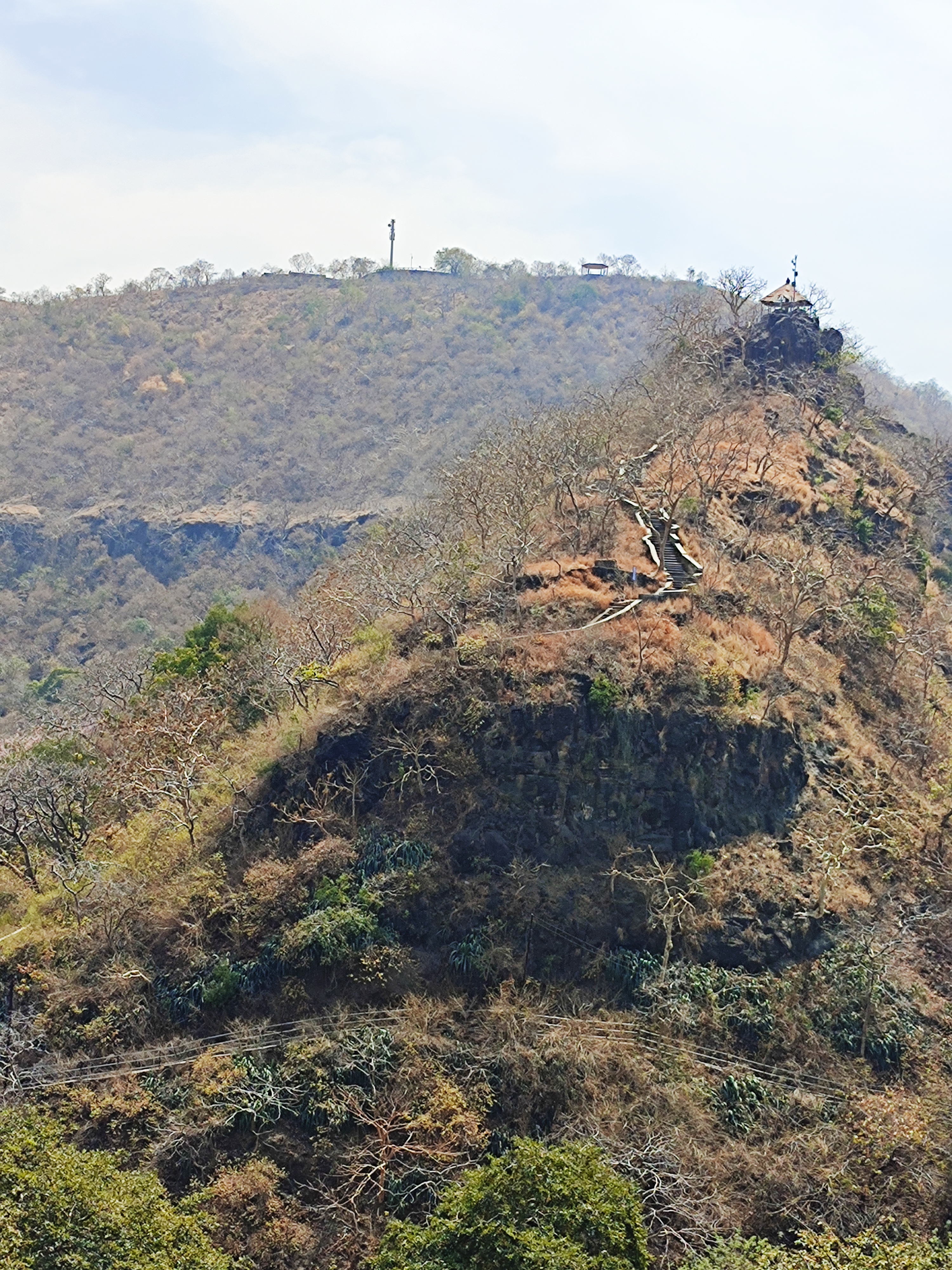
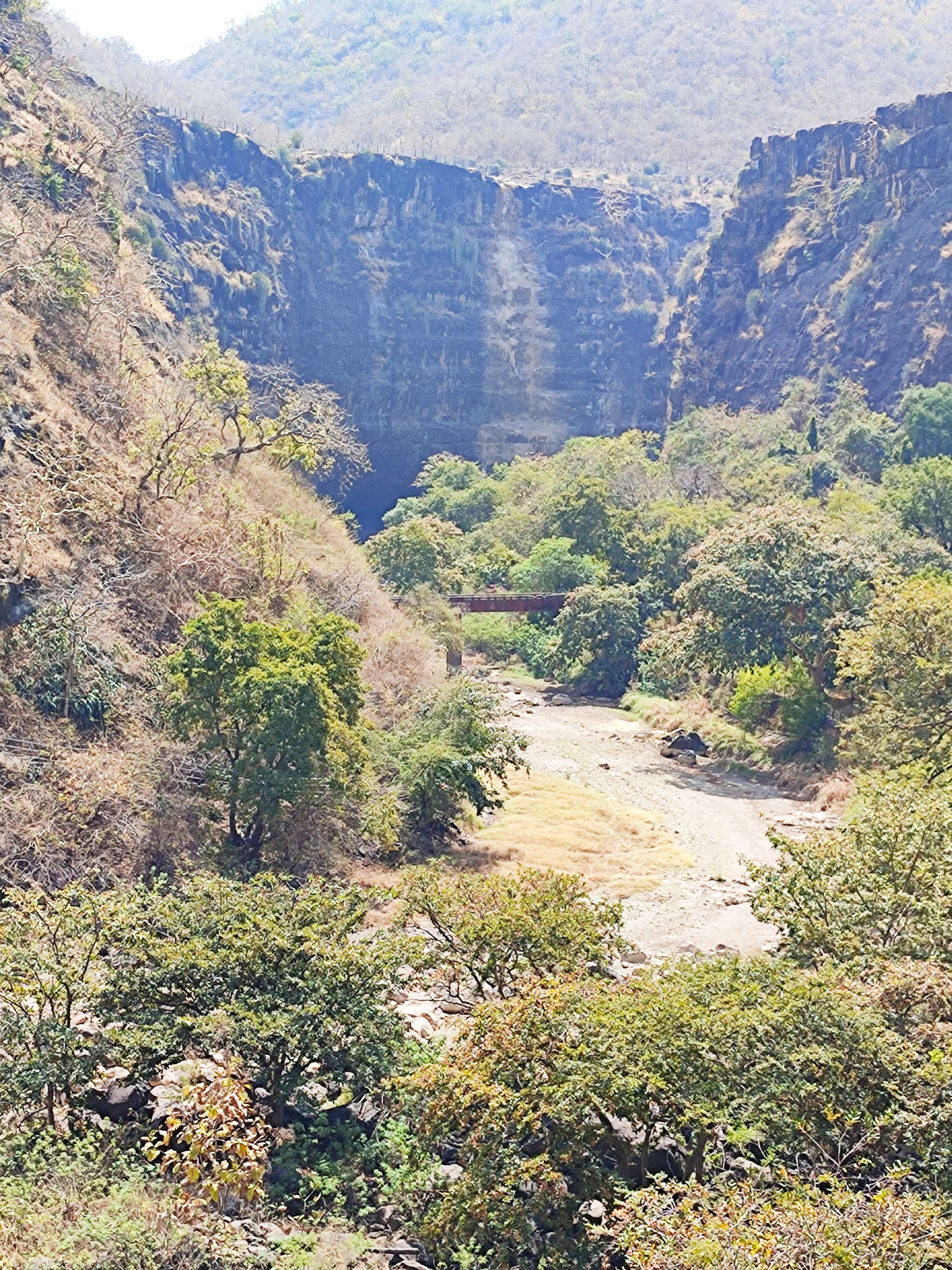
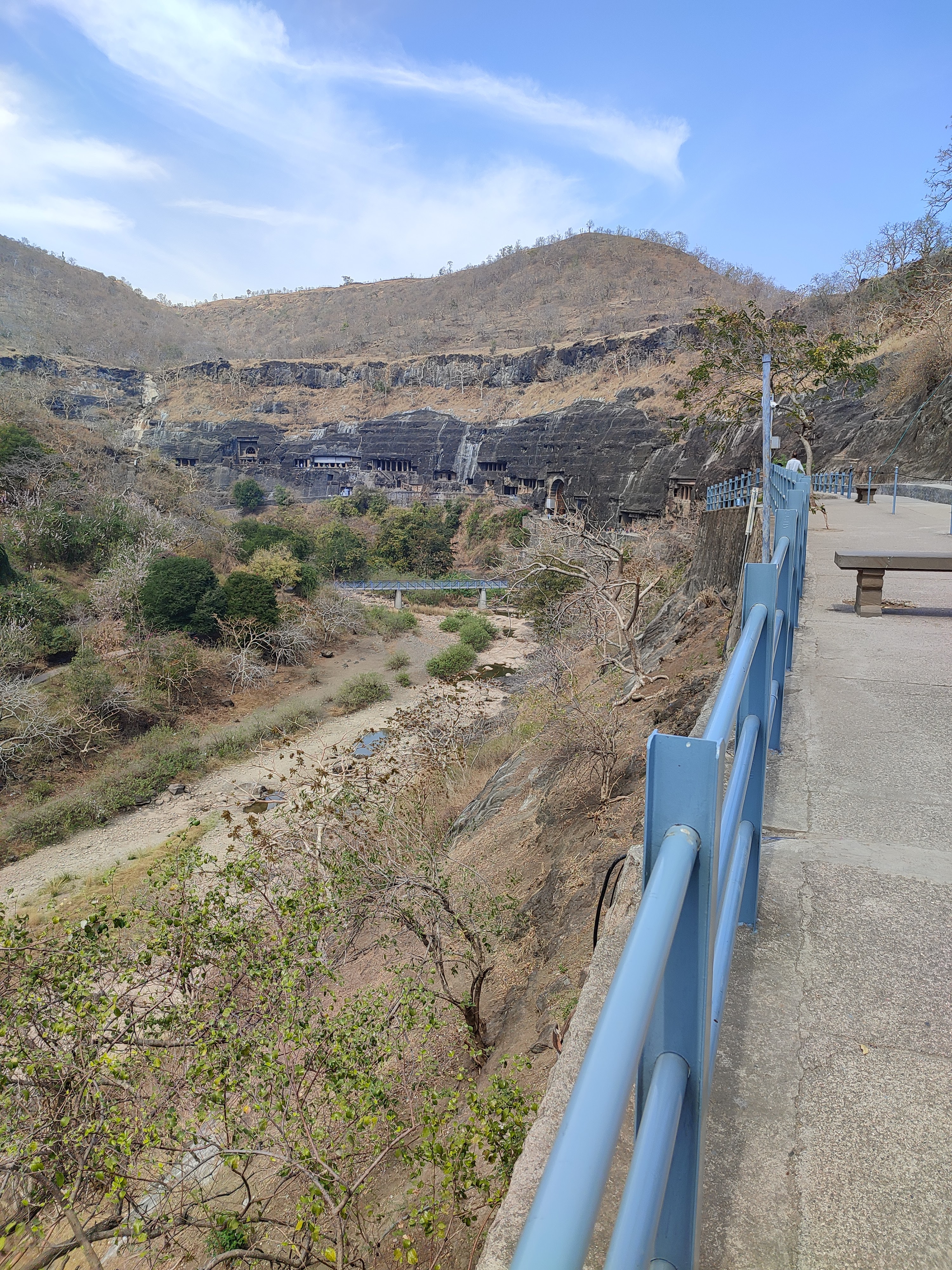
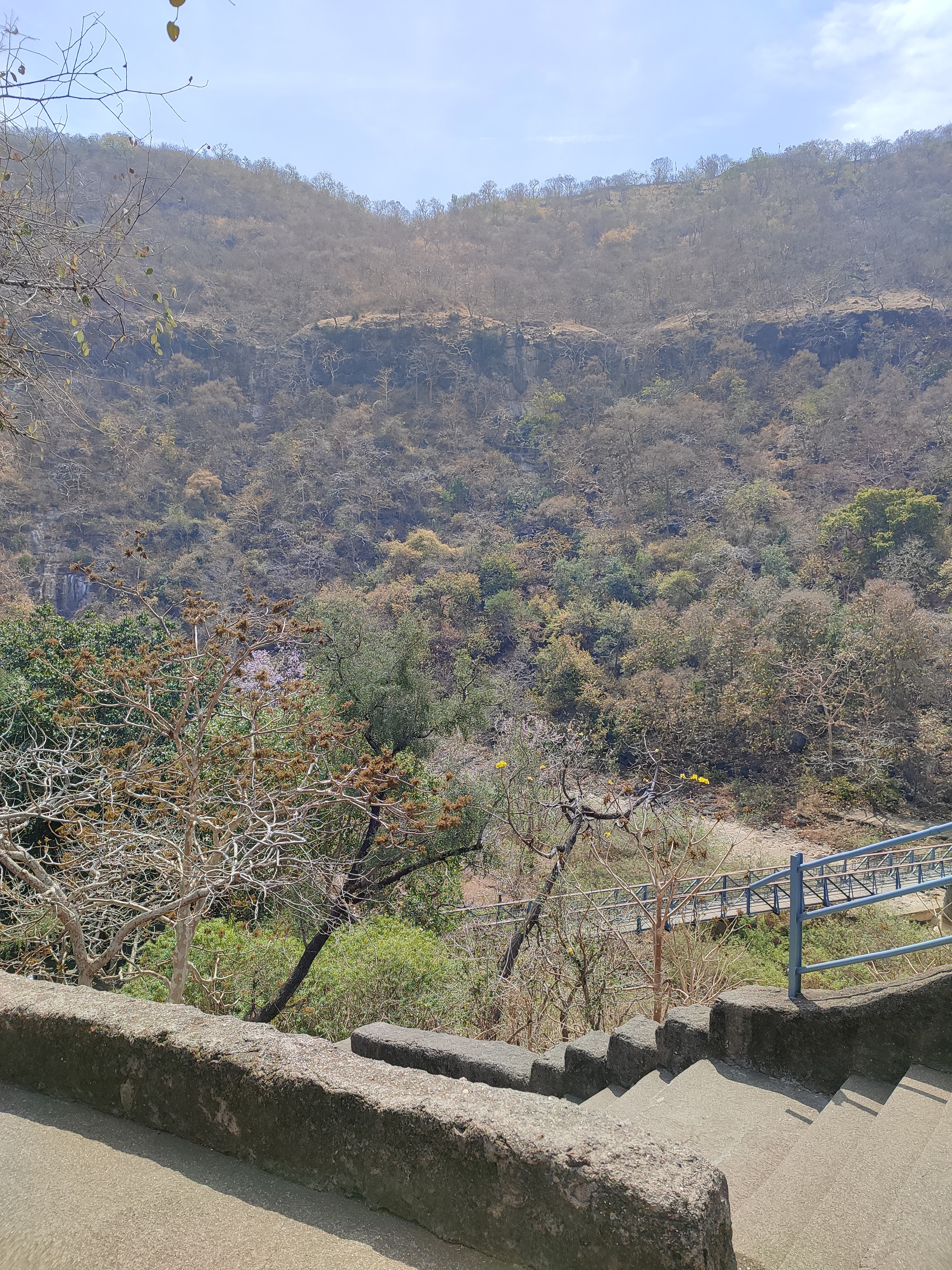

A word of advice. If you go unprepared, you will tend to get bored after seeing a couple of caves. Read, google a bit, short-list the caves where you would like to spend time, understand their history and significance, then you will be able to appreciate the sculptures and paintings much better or rather, closely relate to them. We have to remove our footwear before entering each cave and there are cave attendants who monitor the visitors. The weather can get unbearably hot and hence the best months to visit Ajanta will be between December and February. During this peak tourist season, we were told, there are long queues on the hillside and visitors are allowed in batches. No such issue during our visit in March, though the temperatures were gradually rising.
My recommendation would be to spend time studying, admiring and taking in the beauty of Caves 1,2,10,11,16,17,19 & 26. Caves 1 & 2 have carvings on the pillars with colored paintings on the walls and ceilings. A huge image of the Buddha in the central hall holds pride of place. The diffused lighting arrangements made, provide an ethereal feel. Cave 2 is similar, though we see a lot of female characters in the paintings/carvings, with of course Buddha being prominent, here too.
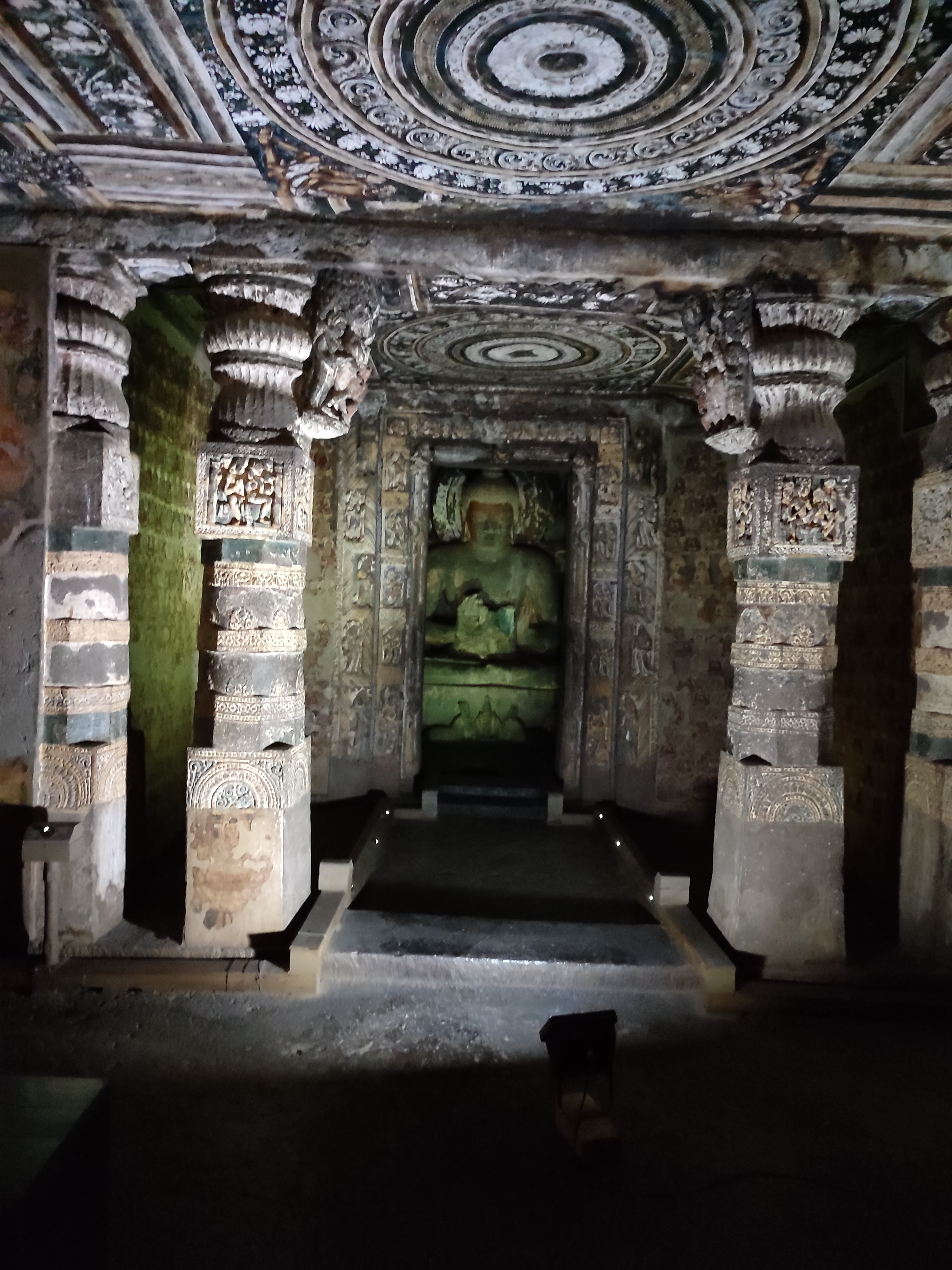
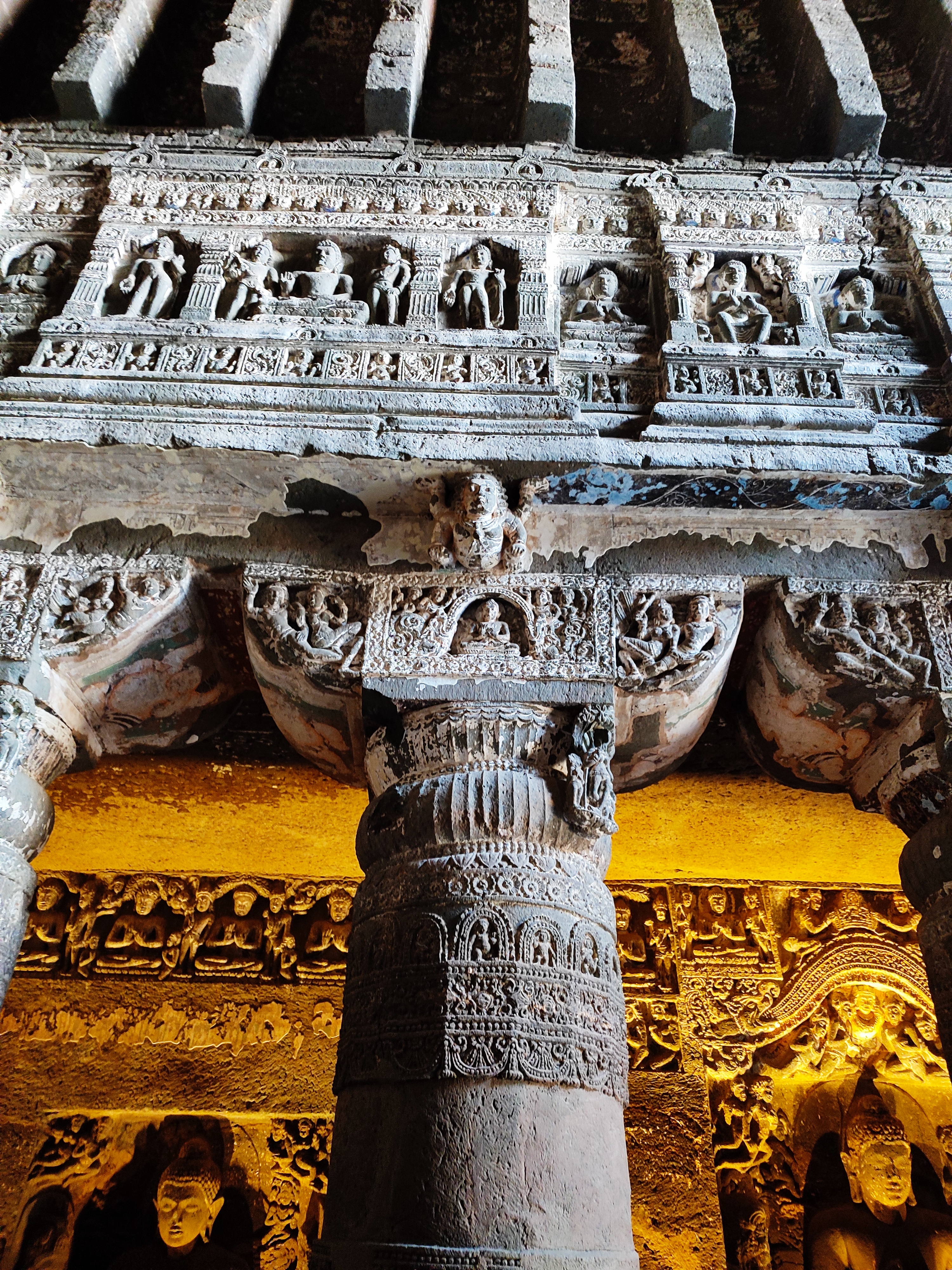
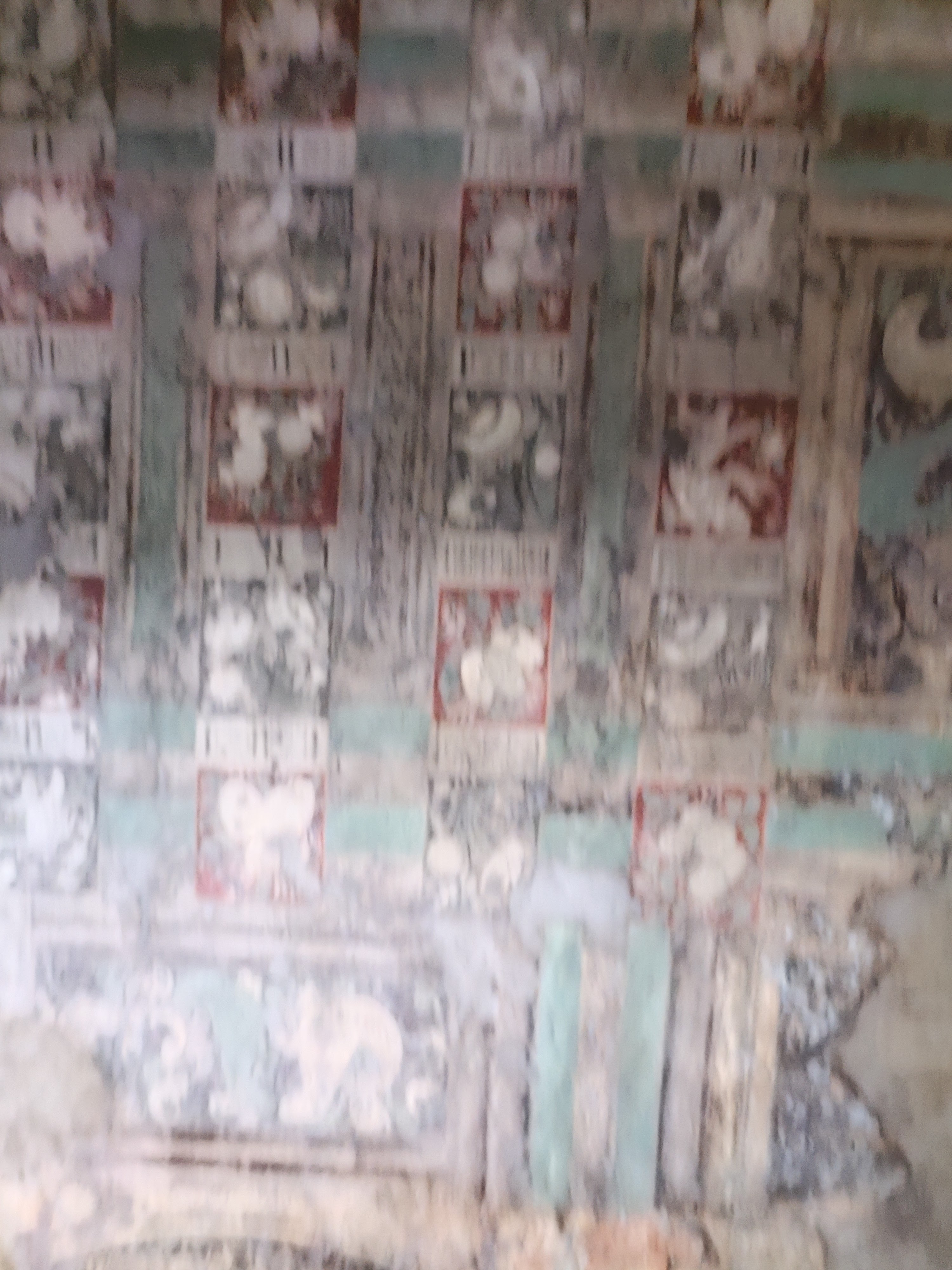
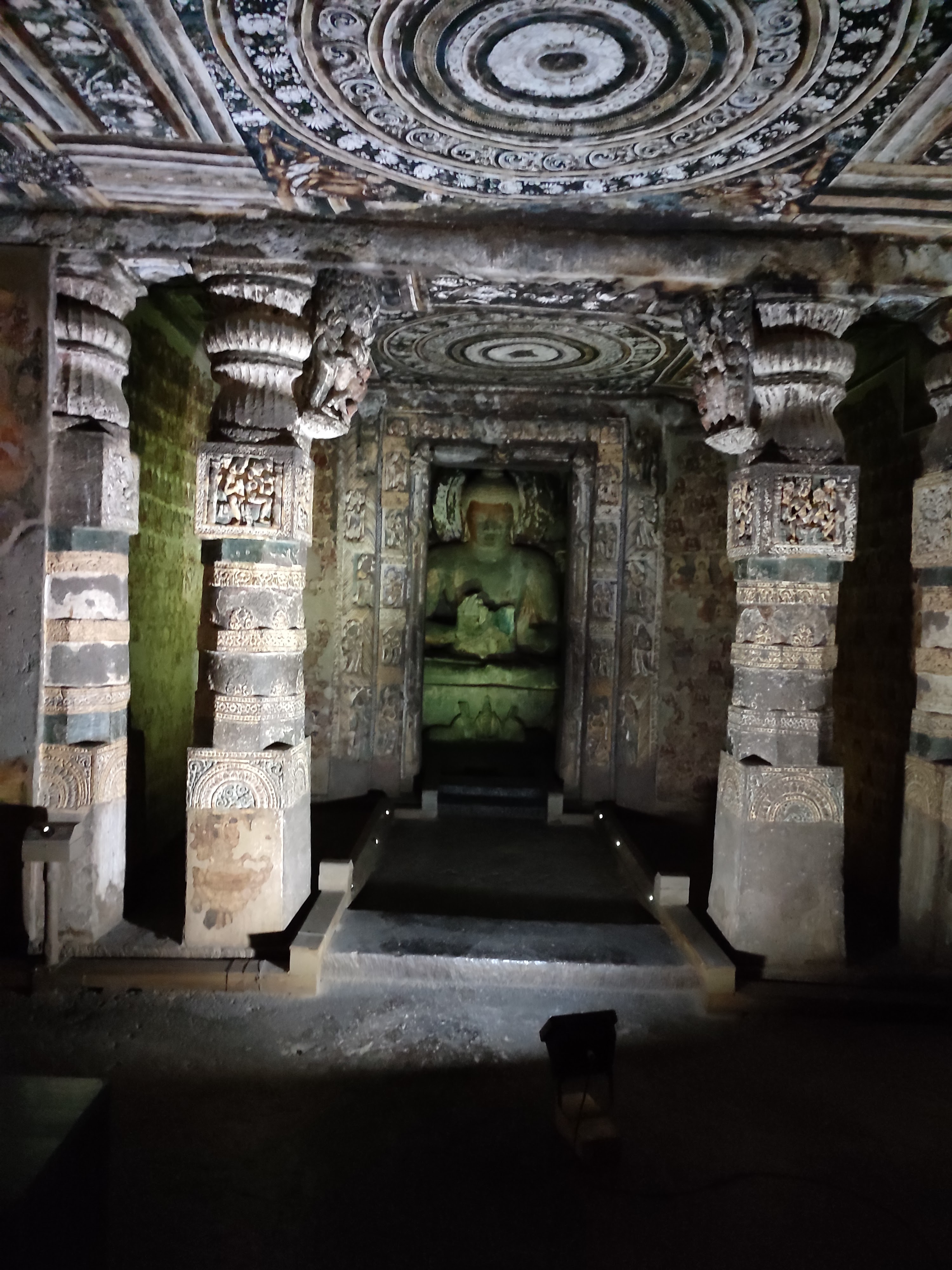
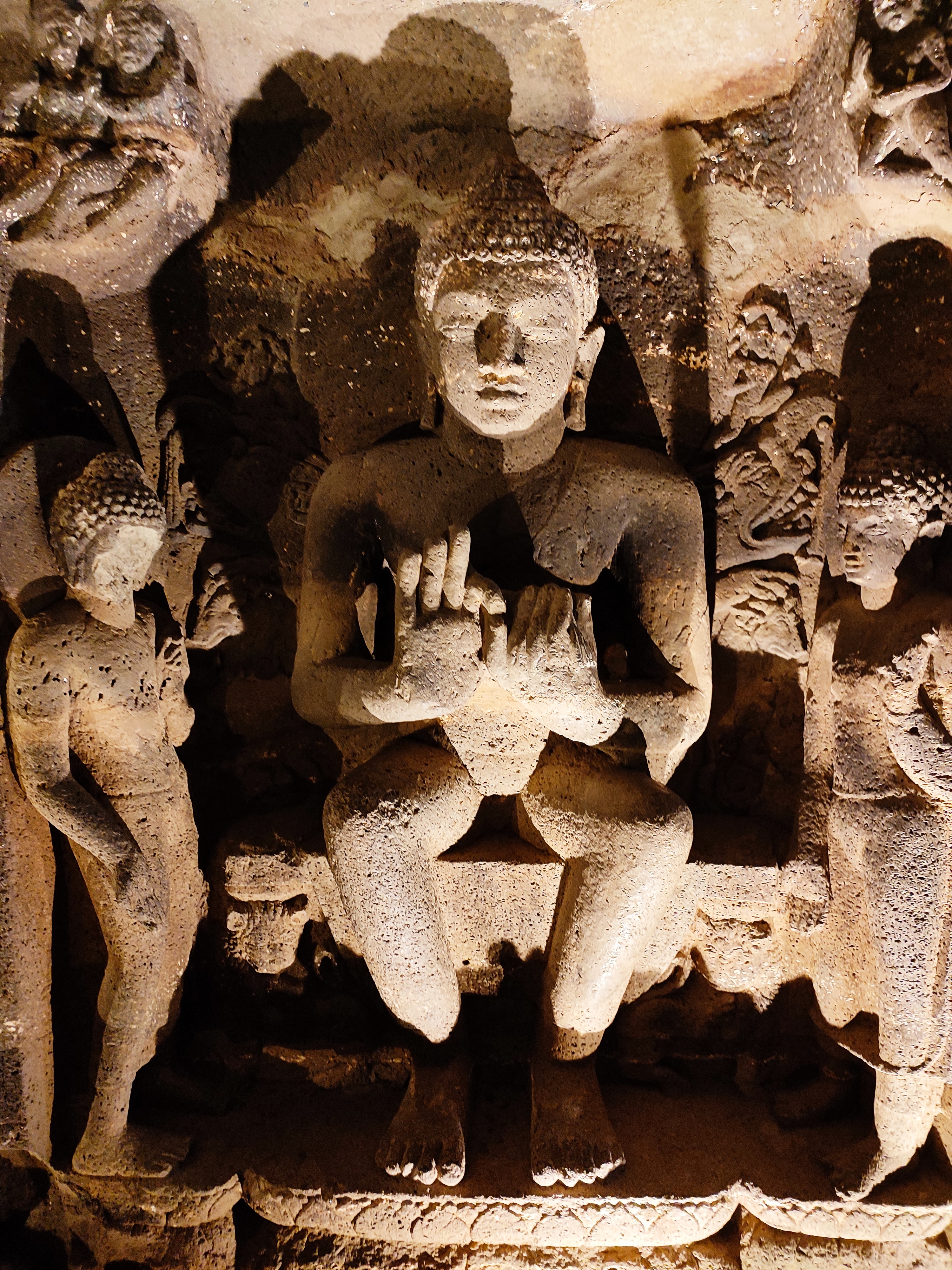
Caves 10 is a large prayer hall lined with pillars and a stupa in the center. Paintings are seen on the pillars and ceilings. Cave 11 is a monastery.
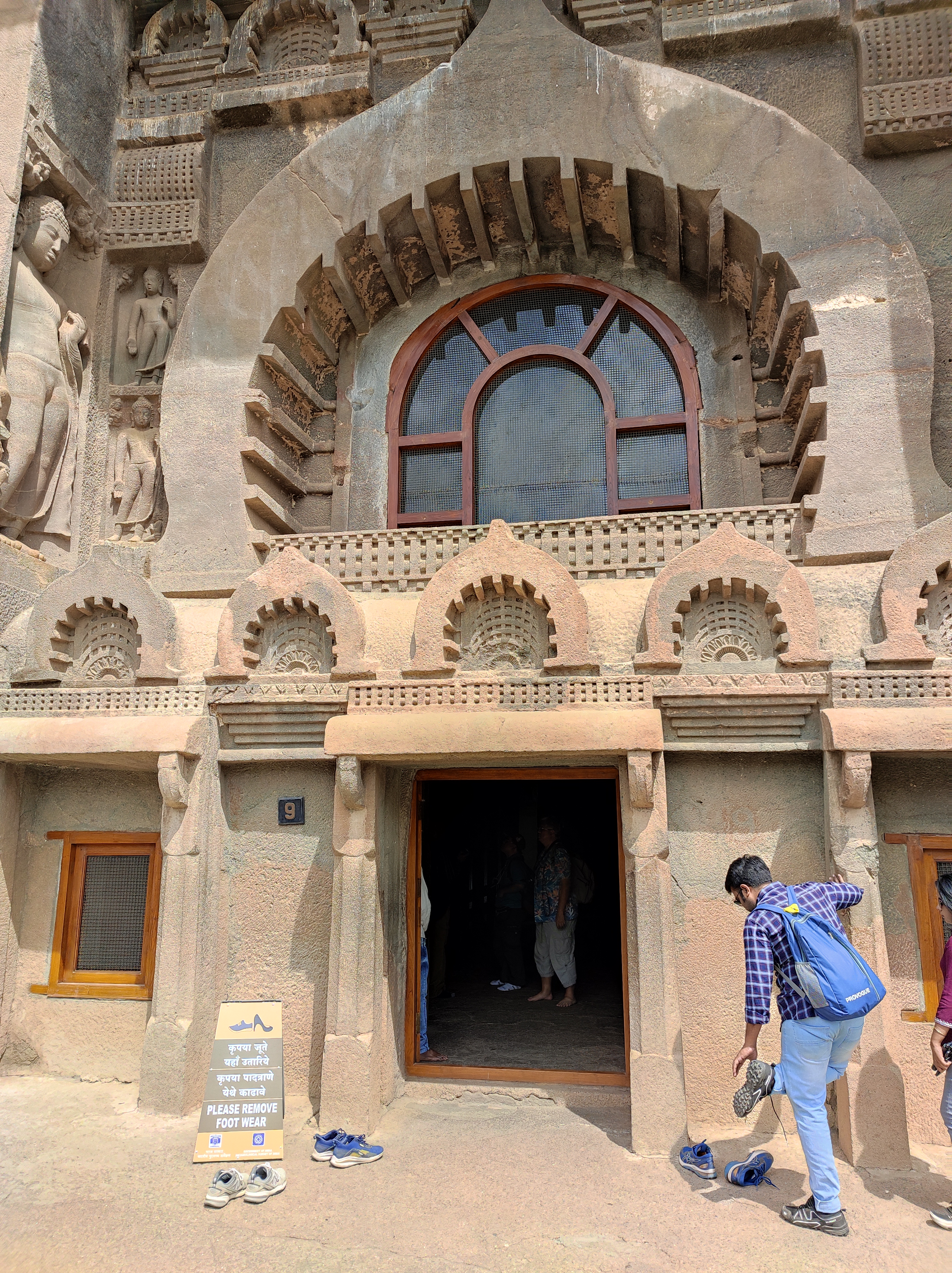
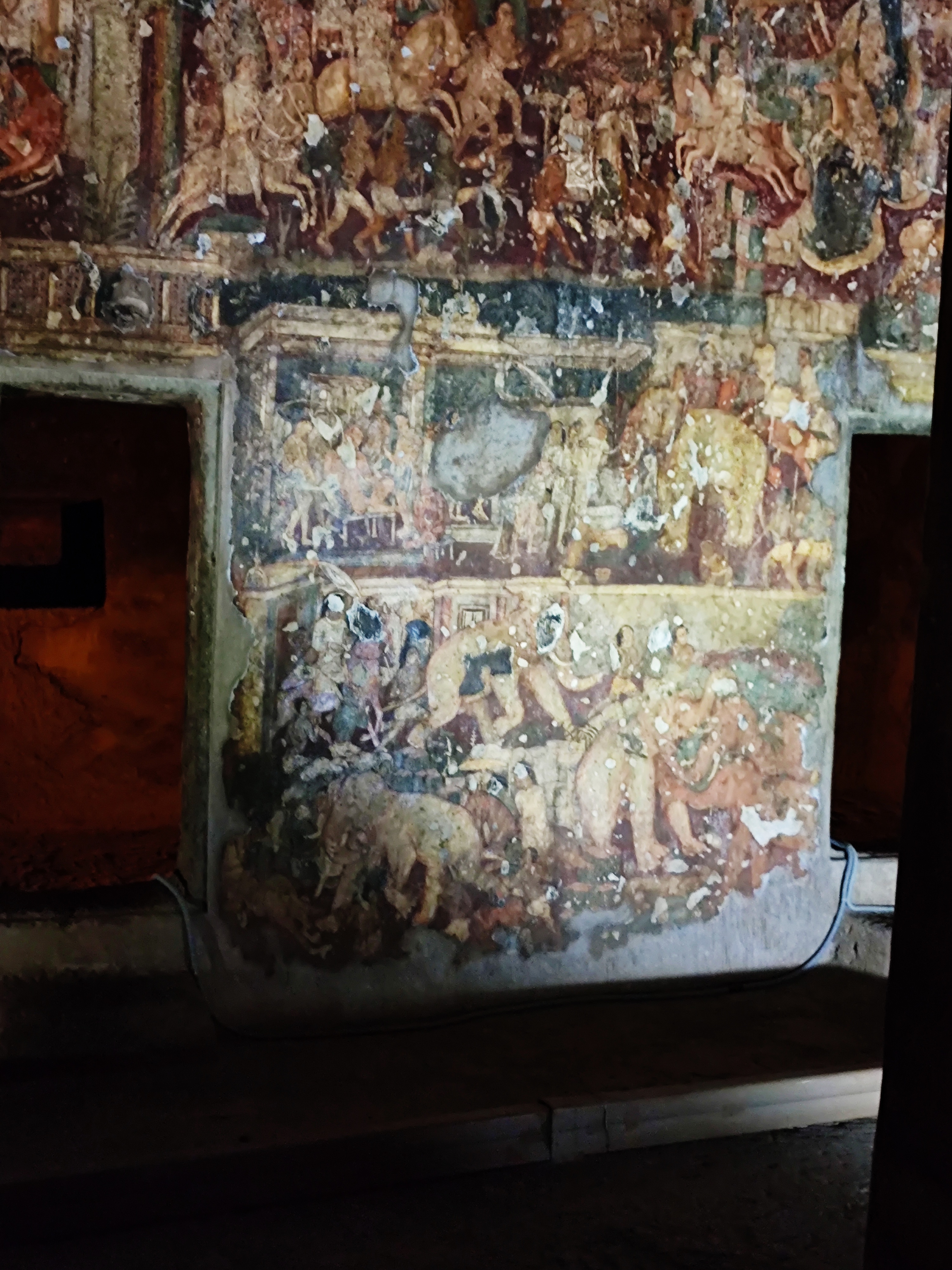
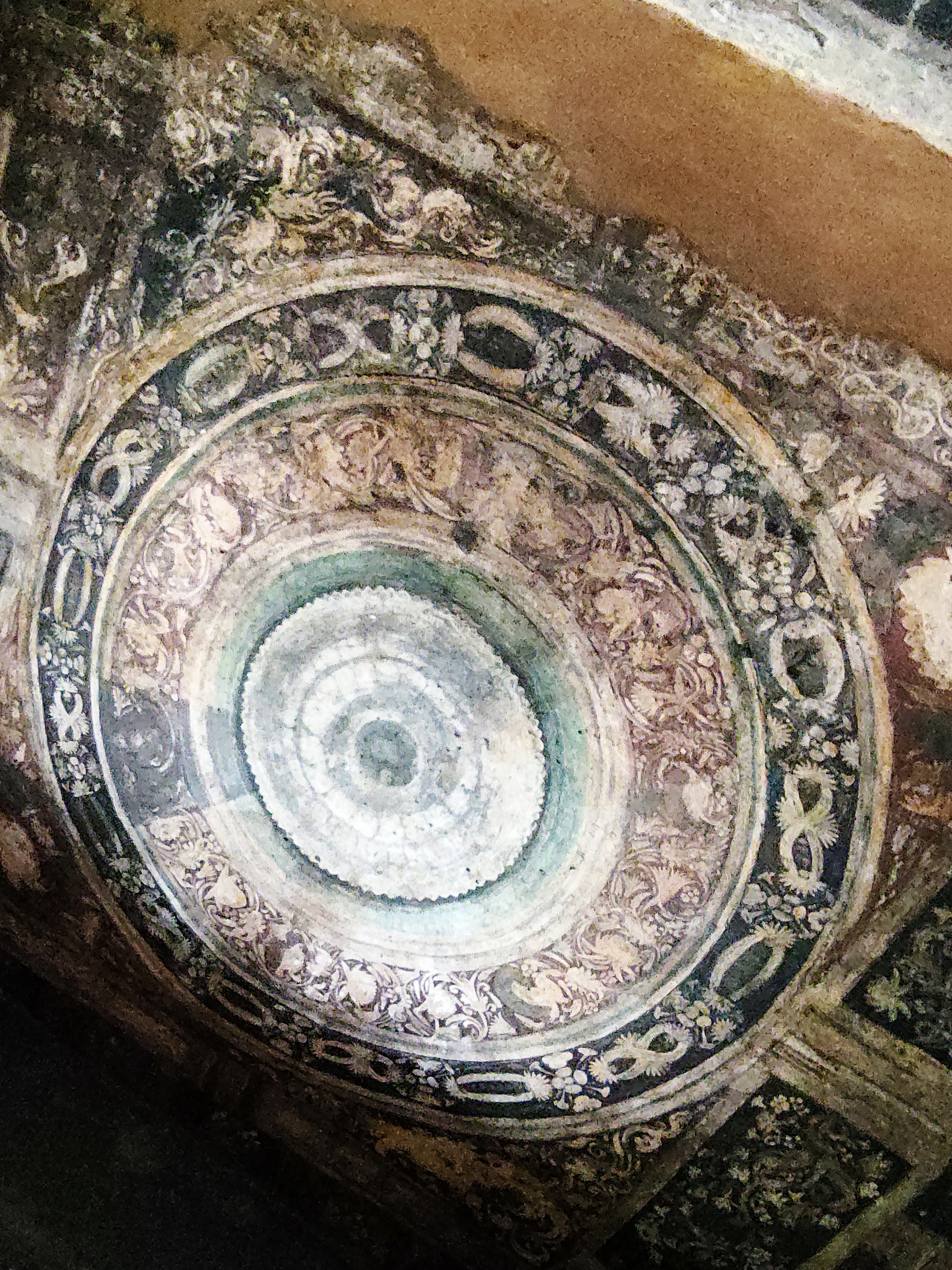
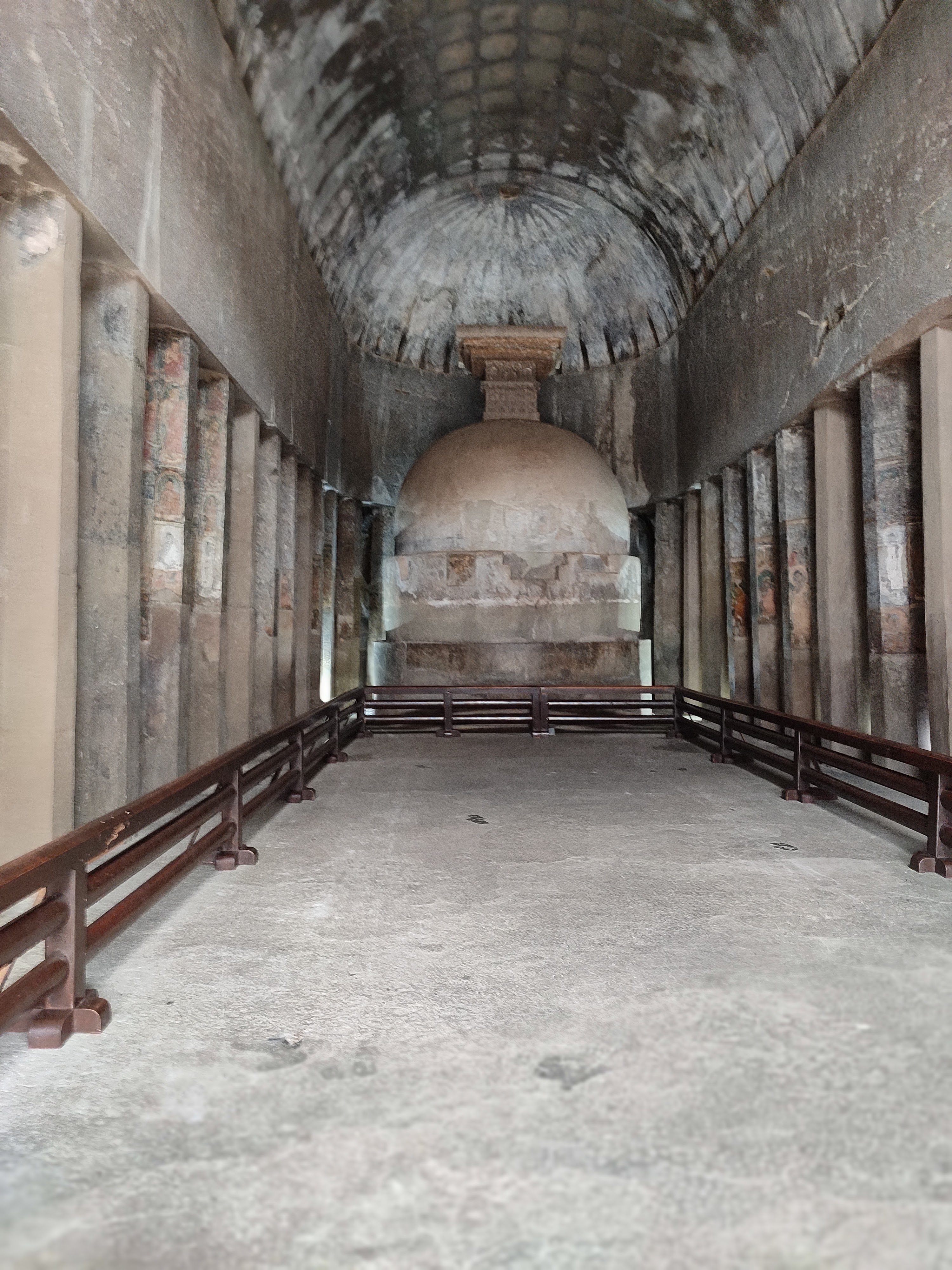
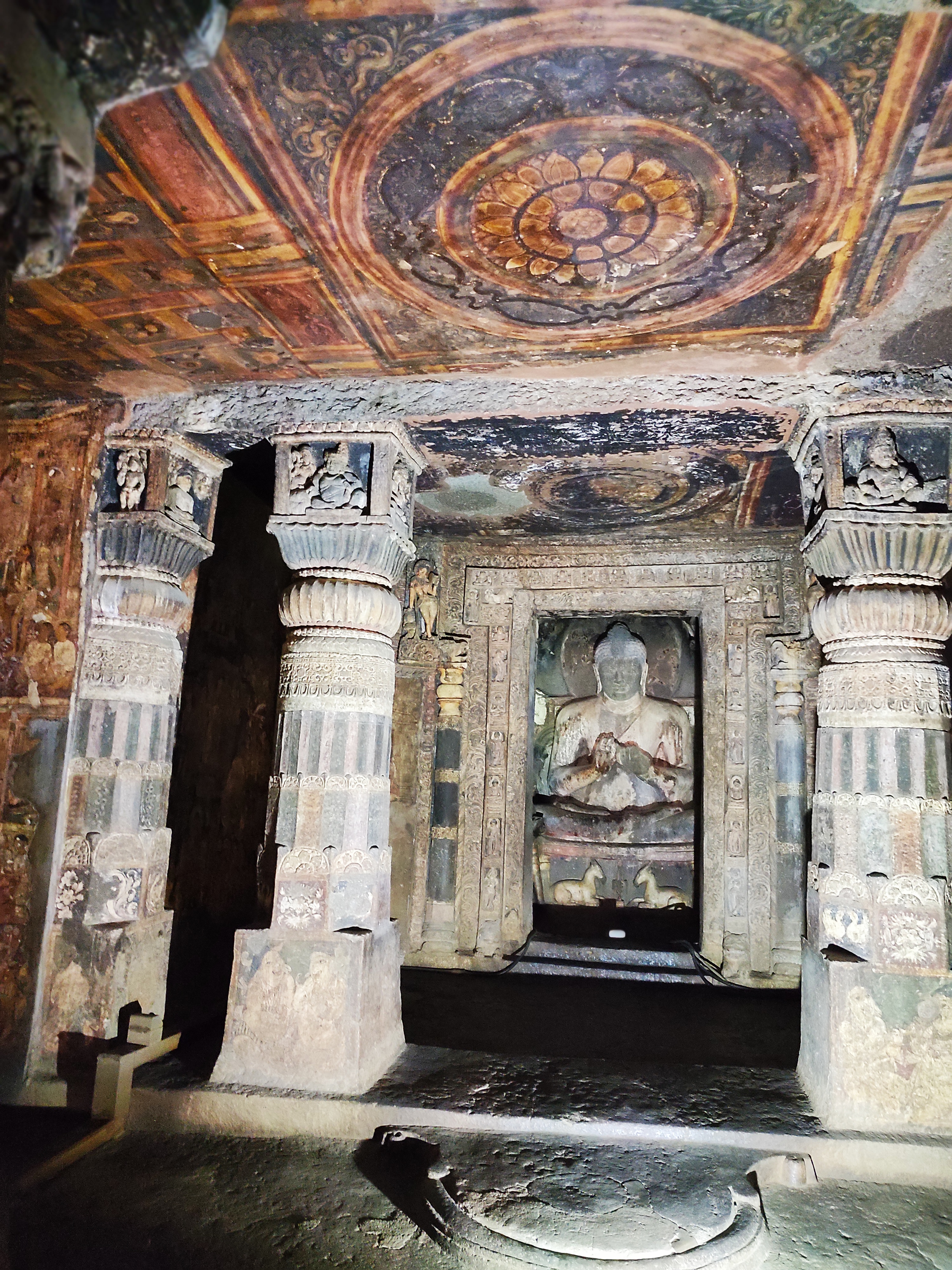
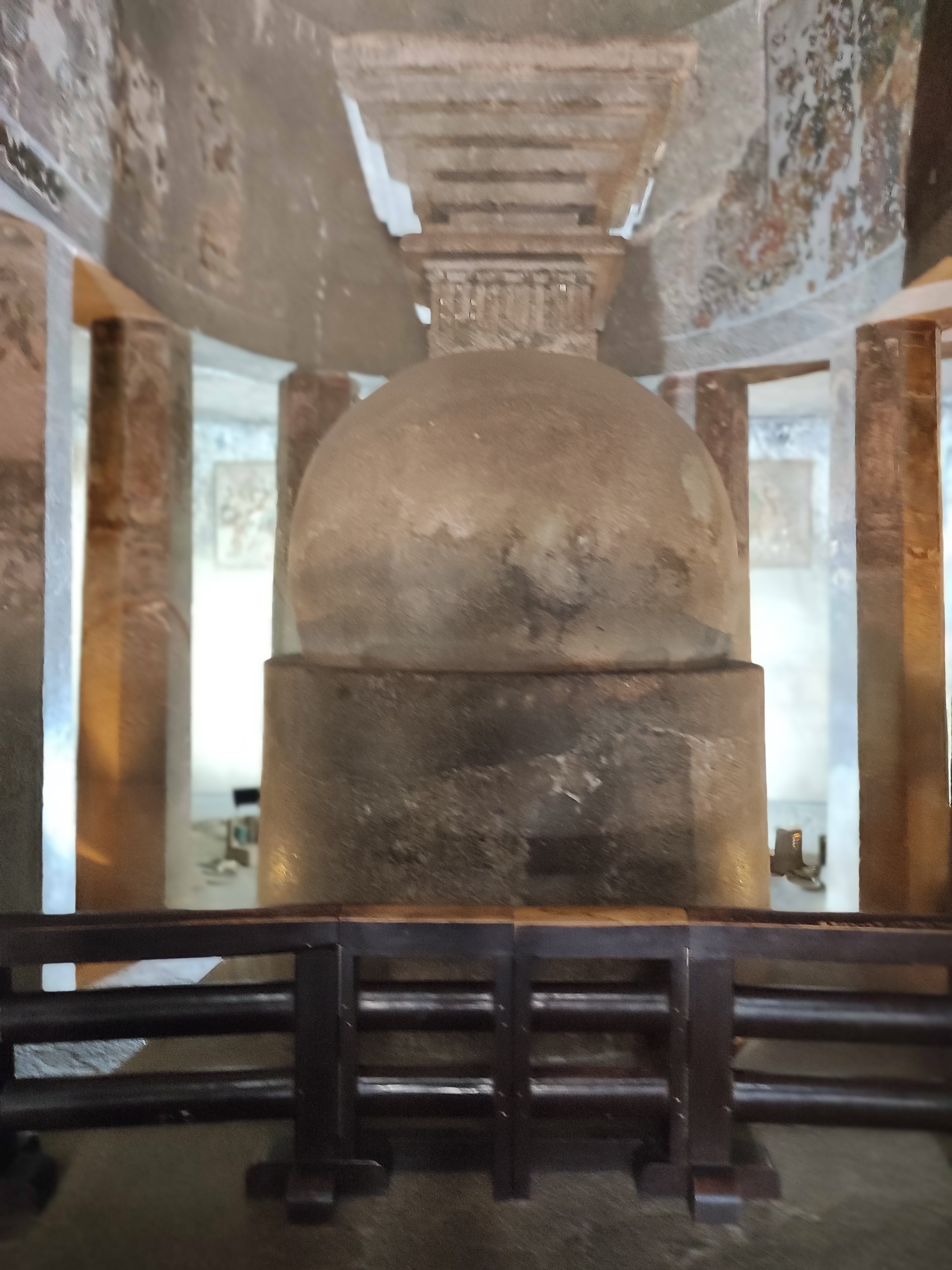
Caves 16 & 17 are among the most well-preserved, with carvings of huge elephants at the entrance and paintings depicting the Jataka tales inside, One story is about an elephant, that in the midst of a famine, asked the people to gather for food in the valley below. It then jumped off the cliff and offered itself as food to the hungry.
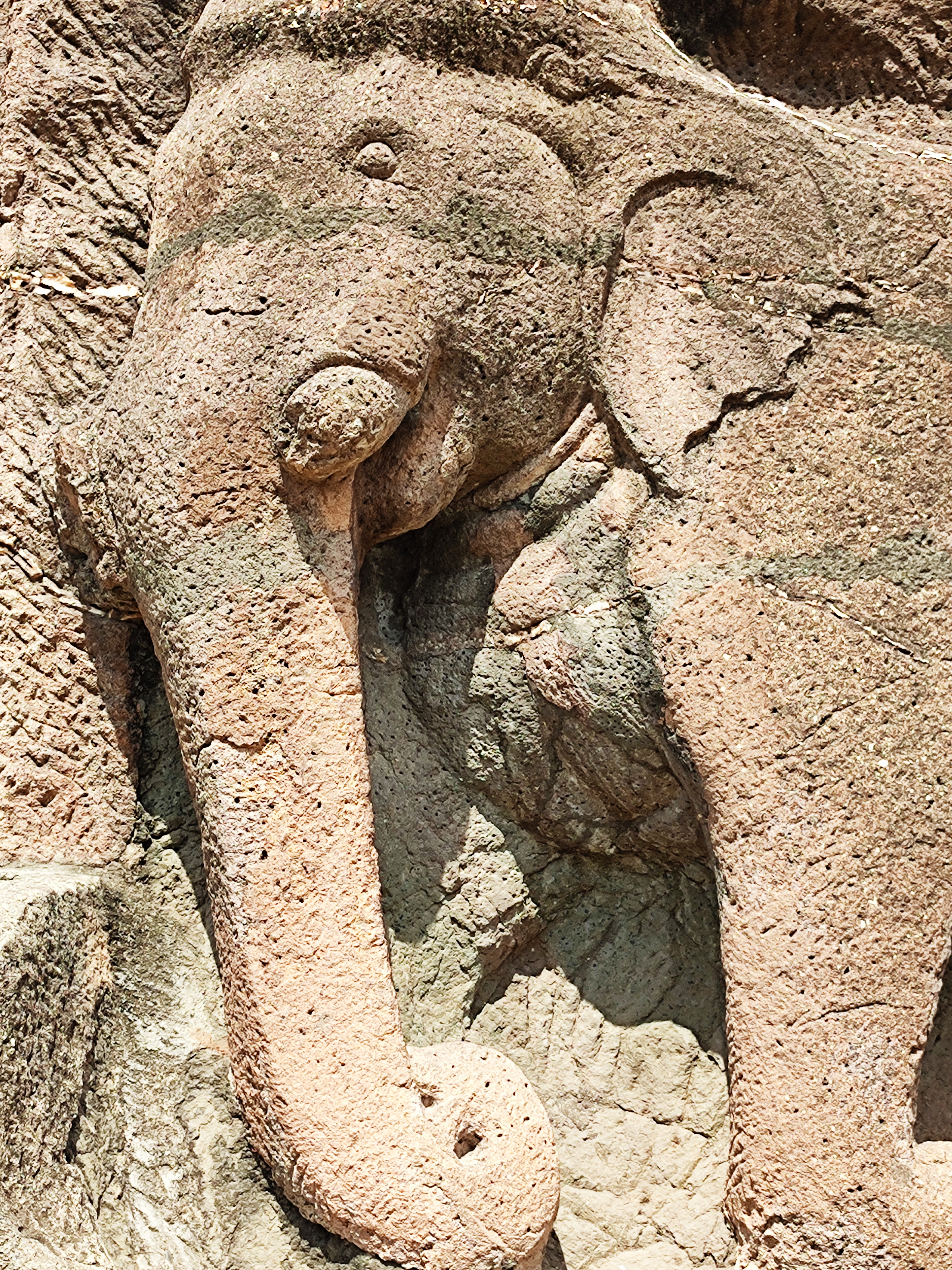
Cave 19 is another large prayer hall with a stupa, yet different from the ones seen in Caves 10 & 9. The stupa has an image of The Buddha carved in it. The pillars lining the corridor also are extensively carved.
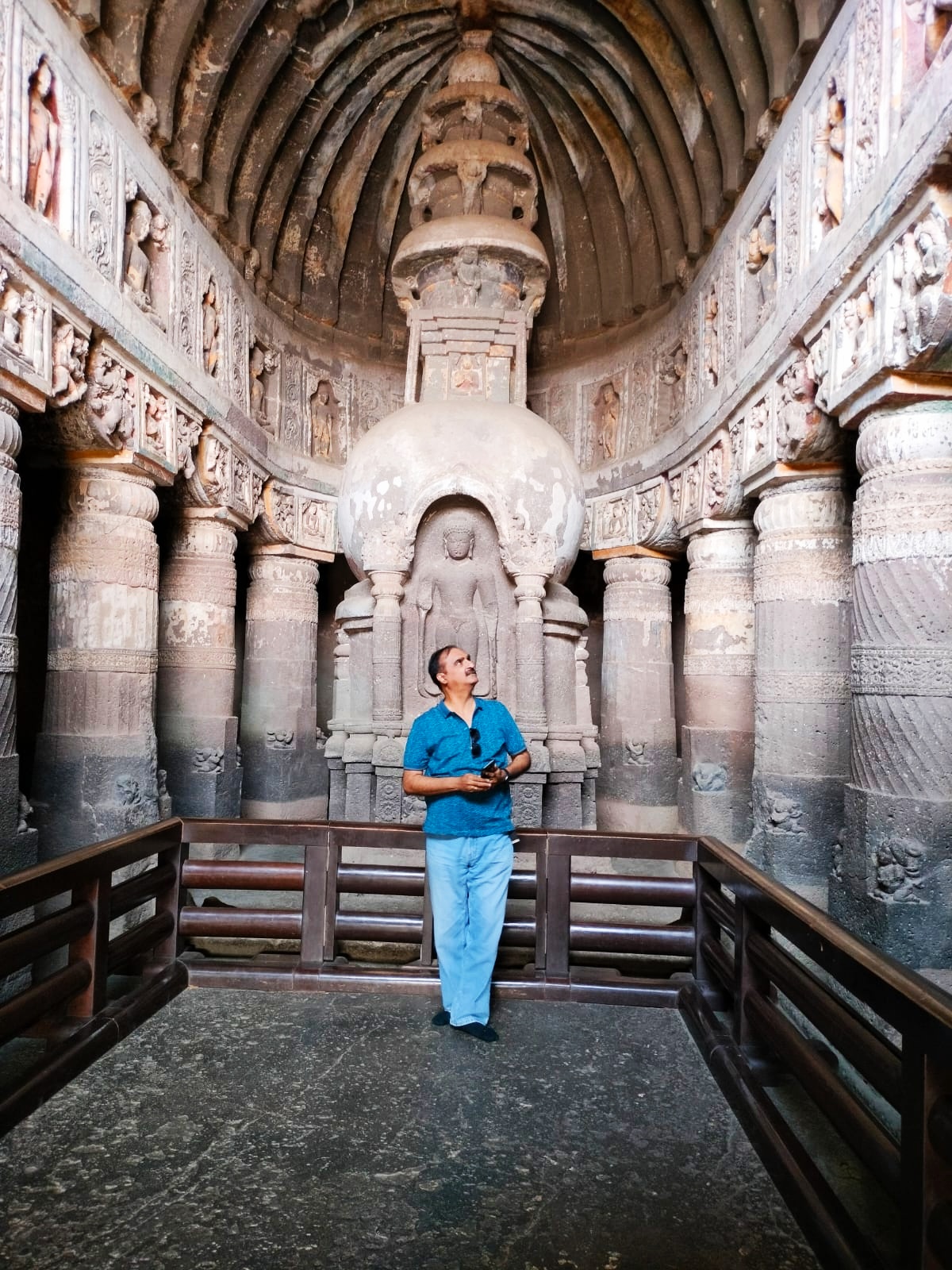
Cave 26 is among the last caves to have been excavated. Here, the carvings are more intricate and there is less emphasis on paintings. We see sculptures of The Buddha in various mudras and there is a Sleeping Buddha as well. There are sculptures in seductive postures below a meditating Buddha, representing the daughters of Mara and on the other side, images of Mara’s men raising din to disturb The Buddha’s meditation.
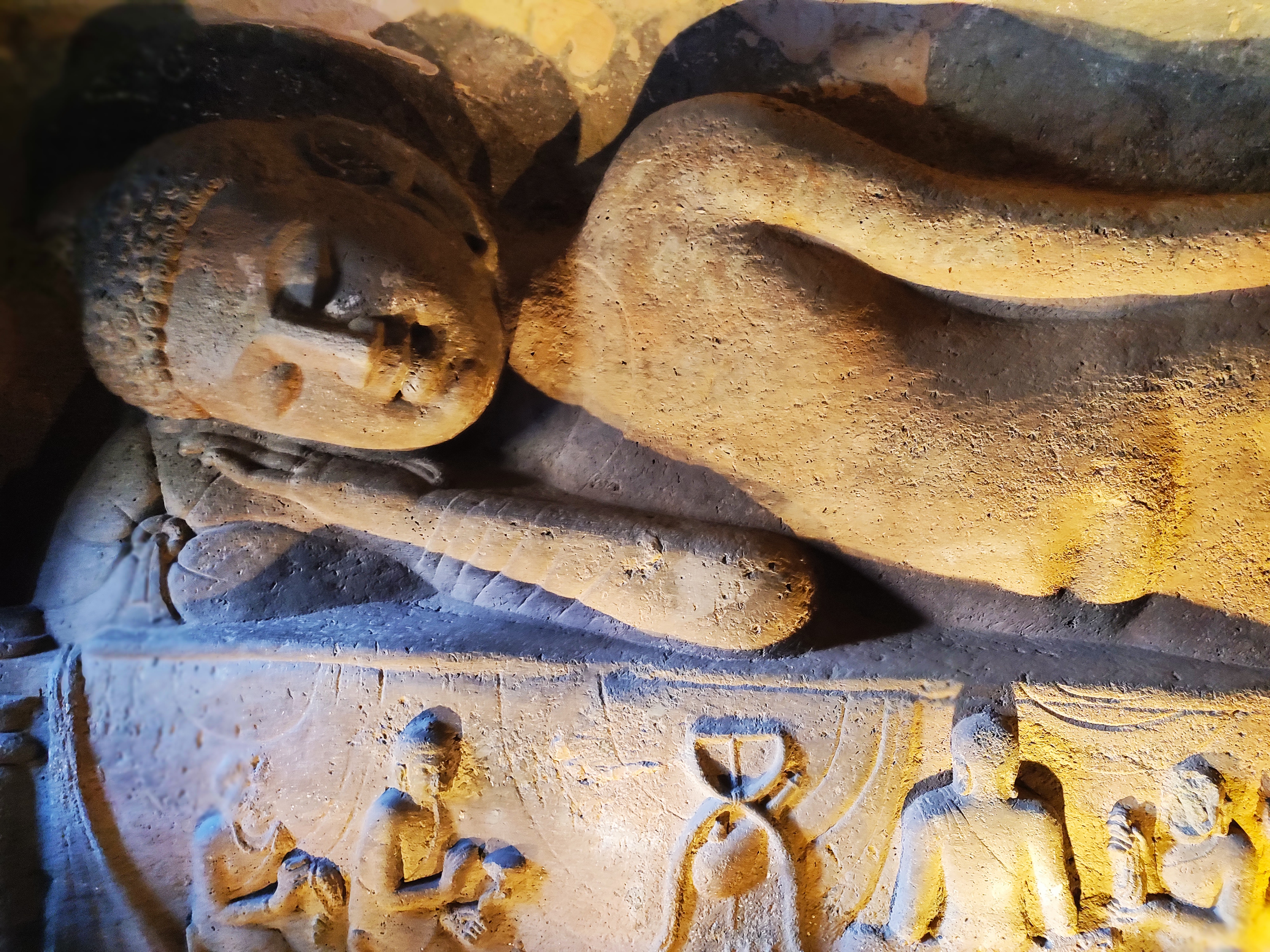
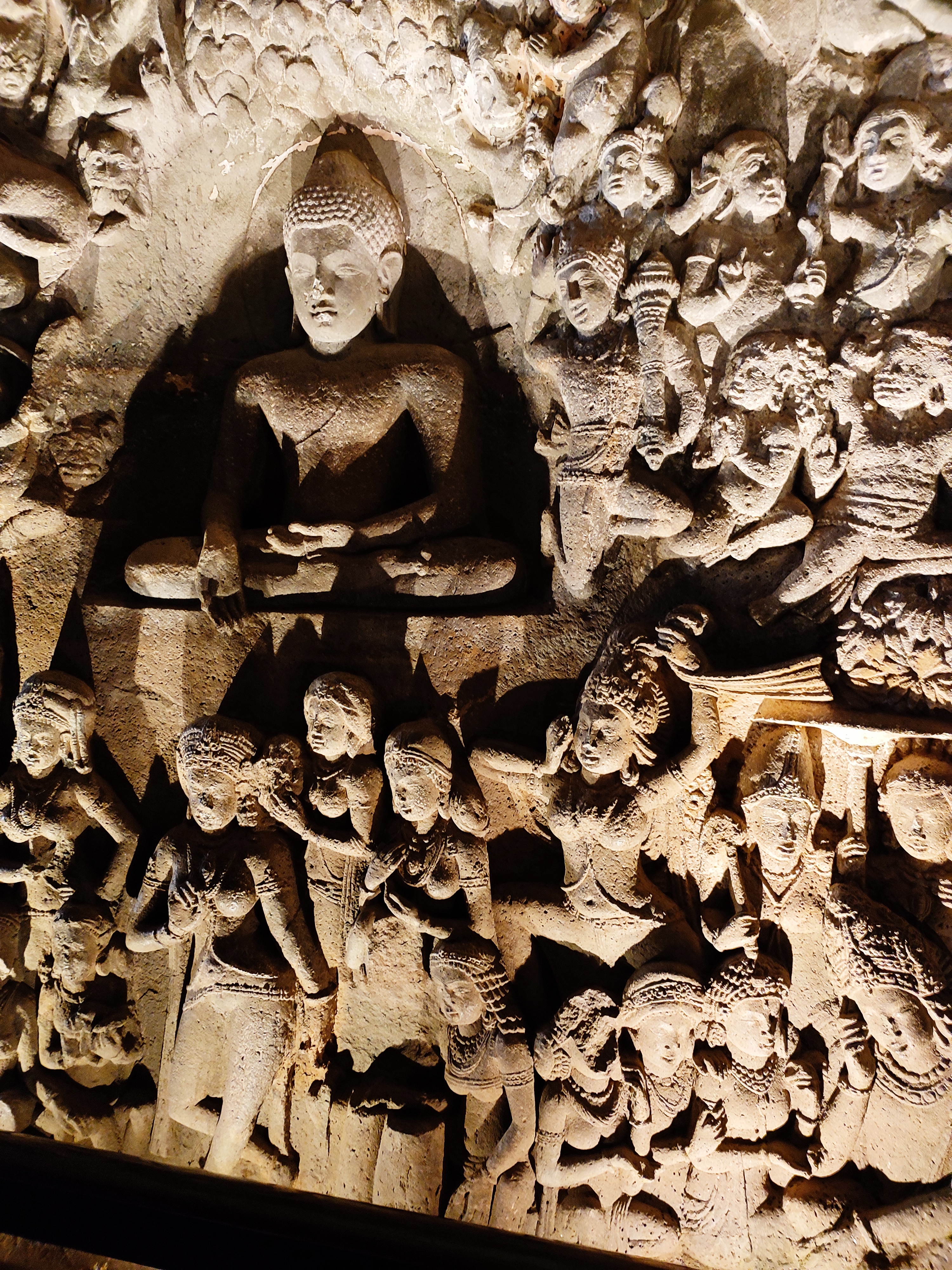
Tired but happy, wondering how the Buddhist monks must have spent months in these mountain caves during the rainy season, we trudged down to board a bus that would take us back to the T-Point shopping arcade/parking lot. Bear in mind, no refreshments till you come back to this point. The shopkeepers’ reps who volunteered to guide us to the bus-stand, now got hold of us and took us to their shops. As usual , they quoted exorbitant prices for the crystal necklaces and other stuff. When we brushed them off, the prices dropped by 75% but as we were not really interested and the quality of the stuff was in question too, we walked away. With growling stomachs, we drove away in search of the nearest place for lunch, after downing a couple of soft drinks.
Discover more from BalasBroadcast
Subscribe to get the latest posts sent to your email.
Pingback: Ajanta Ellora – Day 2 – Bala's Broadcast